#rand brooks
Photo
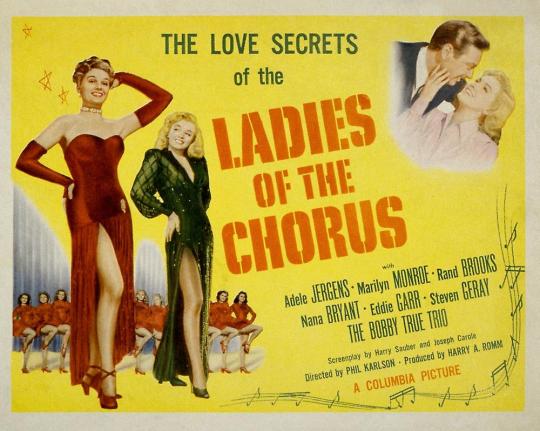
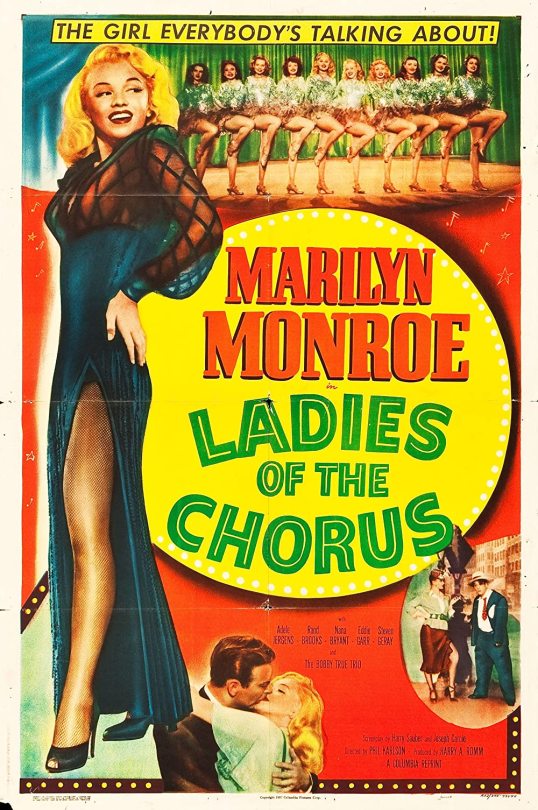







Ladies of the Chorus (1948) Phil Karlson
December 7th 2022
#ladies of the chorus#1948#phil karlson#adele jergens#marilyn monroe#rand brooks#eddie garr#nana bryant#paul e. burns#frank j. scannell
13 notes
·
View notes
Text
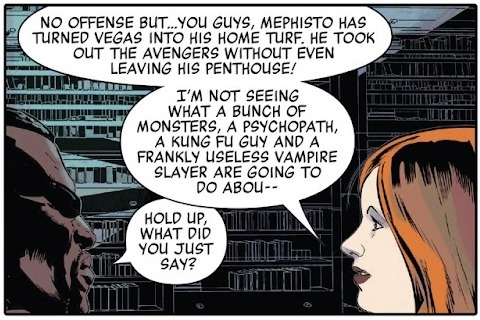

Doctor Strange: Damnation (Vol. 1/2018), #2.
Writers: Nick Spencer and Donny Cates: Penciler and Inker: Szymon Kudranski; Colorist: Dan Brown; Letterer: Travis Lanham
#Marvel#Marvel comics#Marvel 616#Doctor Strange: Damnation#Moon Knight comics#Moon Knight#Marc Spector#Mr. Knight#Blade#Eric Brooks#Elsa Bloodstone#Iron Fist#Danny Rand#Ghost Rider#Johnny Blaze#Wong#Doctor Voodoo#Jericho Drumm#I think about “I’ve never even seen any vampires” “uuuuh and you’re welcome for that???”#and “go fight a dragon rich boy” on a near weekly basis#however more critically this could be a case of “oh haha isn’t it funny that the mentally ill guy isn’t aware that he’s mentally ill???”#but having gotten more acquainted with Marc’s incredibly dry sense of humor I am personally choosing to ignore that possibility#and instead choose to believe that Marc was perfectly aware that Elsa was making a snide comment at his expense#and is now lampooning her/refusing to take her seriously#but that’s just me
17 notes
·
View notes
Text
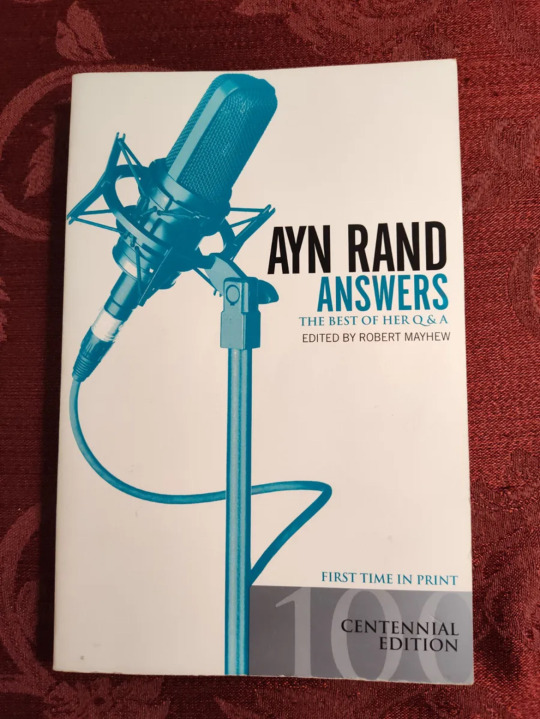
“What should the United Sates do about the [1973] Arab-Israeli War?
Give all help possible to Israel. Consider what is at stake. It is not the moral duty of any country to send men to die helping another country. The help Israel needs is technology and military weapons—and they need them desperately. Why should we help Israel? Israel is fighting not just the Arabs but Soviet Russia, who is sending the Arabs armaments. Russia is after control of the Mediterranean and oil.
Further, why are the Arabs against Israel? (This is the main reason I support Israel.) The Arabs are one of the least developed cultures. They are still practically nomads. Their culture is primitive, and they resent Israel because it's the sole beachhead of modern science and civilization on their continent. When you have civilized men fighting savages, you support the civilized men, no matter who they are. Israel is a mixed economy inclined toward socialism. But when it comes to the power of the mind—the development of industry in that wasted desert continent—versus savages who don't want to use their minds, then if one cares about the future of civilization, don't wait for the government to do something. Give whatever you can. This is the first time I've contributed to a public cause: helping Israel in an emergency.” - Ford Hall Forum lecture (1973) [p. 96]
(…)
“Would you comment on the rights of the Palestinians to their homeland?
Whatever rights the Palestinians may have had—I don't know the history of the Middle East well enough to know what started the trouble—they have lost all rights to anything: not only to land, but to human intercourse. If they lost land, and in response resorted to terrorism—to the slaughter of innocent citizens—they deserve whatever any commandos anywhere can do to them, and I hope the commandos succeed.” - Ford Hall Forum lecture (1977) [p. 97]

“We should be supporting Israel’s right to take whatever military action is needed to defend itself against its nihilistic enemies. Morally and militarily, Israel is America’s frontline in the war on terrorism. If America is swayed by Arafat’s latest empty rhetoric, and allows him to continue threatening Israel, our own campaign against terrorism becomes sheer hypocrisy and will, ultimately, fail.
(…)
Israel is the only free country in a region dominated by Arab monarchies, theocracies and dictatorships. It is only the citizens of Israel — Arabs and Jews alike — who enjoy the right to express their views, to criticize their government, to form political parties, to publish private newspapers, to hold free elections. When Arab authorities deny the most basic freedoms to their own people, it is obscene for them to start claiming that Israel is violating the Palestinians’ rights. All Arab citizens who are genuinely concerned with human rights should, as their very first action, seek to oust their own despotic rulers and adopt the type of free society that characterizes Israel.
Since its founding in 1948, Israel has had to fight five wars — all in self-defense — against twenty-two hostile Arab dictatorships, and has been repeatedly attacked by Palestinian terrorists. Arafat is responsible for the kidnapping and murder of Israeli schoolchildren, the hijacking of airliners and the car bombings and death-squad killings of thousands of Israeli, American, Lebanese and Palestinian civilians. Today he ardently sponsors such terror groups as Hamas, Islamic Jihad and the al Aksa Brigade.
The land Israel is “occupying” was captured in a war initiated by its Arab neighbors. Like any victim of aggression, Israel has a moral right to control as much land as is necessary to safeguard itself against attack. The Palestinians want to annihilate Israel, while Israel wants simply to be left alone. If there is a moral failing on Israel’s part, it consists of its reluctance to take stronger military measures. If it is right for America to bomb al-Qaeda strongholds in Afghanistan — and it is — then it is equally justifiable for Israel to bomb the terrorist strongholds in the occupied territories.
Like America’s war against the Taliban and al-Qaeda, the Arab-Israeli dispute is a conflict between opposing philosophies. On the one side are the forces of mysticism, medieval tribalism, dictatorship — and terror; on the other side are the forces of reason, individualism, capitalism — and civilization. Arafat and his sympathizers hate Israel for the same reason that Osama bin Laden and his sympathizers hate America, i.e., for embracing secular, Western values. No “peace process” is possible with such enemies.
(…)
Only Israel has a moral right to establish a government in that area — on the grounds, not of some ethnic or religious heritage, but of a secular, rational principle. Only a state based on political and economic freedom has moral legitimacy. Contrary to what the Palestinians are seeking, there can be no “right” to establish a dictatorship.
As to the rightful owners of particular pieces of property, Israel’s founders — like the homesteaders in the American West — earned ownership to the land by developing it. They arrived in a desolate, sparsely populated region and drained the swamps, irrigated the desert, grew crops and built cities. They worked unclaimed land or purchased it from the owners. They introduced industry, libraries, hospitals, art galleries, universities — and the concept of individual rights. Those Arabs who abandoned their land in order to join the military crusade against Israel forfeited all right to their property. And if there are any peaceful Arabs who were forcibly evicted from their property, they should be entitled to press their claims in the courts of Israel, which, unlike the Arab autocracies, has an independent, objective judiciary — a judiciary that recognizes the principle of property rights.
(…)
In 1947 the Palestinians rejected the U.N.’s offer of a state larger than the one they are demanding now. Instead, they joined in a war aimed at wiping Israel from the map. Today, that hostility has only hardened. For example, in a televised public sermon, a Palestinian Imam declared: “God willing, this unjust state [of] Israel, will be erased.” Palestinian textbooks are filled with vile, anti-Jewish propaganda, such as this exhortation from a fifth-grade Arabic language text: “The Jihad against the Jew is the religious duty of every Muslim man and woman.”
(…)
The Arab-Israeli conflict could become a dress rehearsal for a wider, global conflict. If America now stops Israel from retaliating against Arafat, the father of international terrorism, how can it ever justify retaliation against its own enemies? If we force Israel to appease Arafat, we will be broadcasting, loud and clear, that terrorism can bring America too to its knees.
We should urge our government to recognize that there is only one means of achieving long-term Mideast peace: upholding the principle of a free society, which entails the endorsement of Israel’s sweeping retaliation against the scourge of terrorism.”
“Anti-Israel sentiment abounds in the Arab world due to their rejection of Jewish presence in the area, especially in the form of a State. What is much more vexing is that a similar attitude is pervasive among the libertarian community (and, even, shonda, amongst, happily, a very small percentage of Jews) where Israel is often picked out as a particularly pernicious state relative to almost all others. Libertarians, of course, are no big fans of any government, but even for libertarians who believe in a minimum state (so called “minarchists”) encompassing domestic protection (police), protection from foreigners (defensive army), and courts, why Israel should be singled out as particularly pernicious is troubling.
We believe much of the anti-Israel sentiment among libertarians has its source in an article written in 1967 by the father of the modern libertarian movement, Professor Murray N. Rothbard, entitled “War Guilt in the Middle East”. In this essay, Rothbard pins the blame for the Six Day War entirely on Israel, essentially saying that Israel should have done nothing in response to the Egyptian blockade of the Straits of Tiran at the time, as well as passively accepted explicit threats by Arab leaders to destroy it and annihilate the Jews who live in its territory.
(…)
In our rejoinder to an article in the Indonesian Journal of International and Comparative Law (2016. Vol. 3, Issue 3, June, pp. 435-553), we argue that Israel is not a “uniquely pernicious” state built on outright land expropriation. Our thesis, aside from correcting what we see as Rothbard’s historical inaccuracies leading up to the creation of the State of Israel, is that Rothbard did not go far back enough in time in analyzing legitimate land claims. According to libertarianism, the only thing that grants a person title to land is “homesteading” that territory, essentially mixing one’s labor with it (a la, John Locke, and Rothbard, too). It is historically indisputable that Jews homesteaded much of Palestine long before the late 19th century and the modern Zionist movement. Much of the land currently under dispute was homesteaded by Jews before the territory was even called “Palestine,” when it was in fact called “Judea”.
According to generally accepted historical accounts, Judea was populated by around 2,500,000-3,000,000 Jews at the turn of the common era, including 600,000 in Jerusalem at the time of its destruction in 70 CE. These Jews were unjustly murdered or expelled from their lands and sold into slavery after rebelling against the Roman Empire. Since there can be no man-made statute of limitations in libertarianism, if modern day Jews can prove descent from the original Jewish homesteaders, which we demonstrate they can both culturally and genetically, then all land with prodigious evidence of previous Jewish homesteading dated to the time of the fall of Judea, should return to the descendants of the original homesteaders. These are modern day Jews, who by and large have never relinquished their claims to their ancient homeland.
(…)
In tackling Rothbard’s claims of mass expulsion of Arabs during the 1948 War of Independence, we concede that this did indeed happen in certain isolated cases. But the point is, did they have a right to these areas in the first place? Not in our view. However, in most cases, these villages were abandoned voluntarily in an effort to clear the way for the invading Arab armies at the time. In other cases, Arab towns were used as staging grounds to launch attacks. In such cases, the accusation of land theft against Israel cannot be taken seriously. Moreover, Arabs who decided to stay in Israel are now an integral part of the country with full rights as Israeli citizens. Thus, the charge of theft or “ethnic cleansing” is simply absurd. In fact, the population that was ethnically cleansed were the Jews of Arab countries (about 850,000), who were expelled and expropriated after the creation of the State of Israel. Israel critics never talk about this.
Finally, regarding the legitimacy of Israel as a state, even according to Israel’s most vociferous critics of which Rothbard was one, 7% of pre-1948 Palestine was purchased legitimately by Jews. Given that, would Jews have a right to set up a State on that limited territory, and if attacked, expand those lands in a defensive action? From the perspective of libertarians who recognize the right to set up a minimalist state for the purposes of security and defense only, certainly.
Our conclusion is that Israel is in fact built on both legitimate land purchases as well as legitimate land claims from the past, specifically the Roman period. Ideally, all land in Israel with obvious signs of previous Jewish homesteading dated to the Roman destruction should revert to Jews by shares of stock, i.e. to those Jews who descend from the original homesteaders. These include the Temple Mount (which we know was built by Jewish Kohanim) and the entire Old City of Jerusalem as well as most of modern day East Jerusalem and the Cave of the Patriarchs in Hebron.
While we do not encourage libertarians to take sides in this conflict, we suggest that if they wish to do so, they should side with Israel as the most (classically) liberal, and therefore the most relatively libertarian country in the region.”
#ayn rand#yaron brook#objectivism#liberty#libertarianism#israel#hamas#arafat#yasser arafat#terrorism#martin luther king jr#walter block#rothbard#murray rothbard
1 note
·
View note
Text
Public education plays a critical role in preparing youth to participate in our democracy. Civics education experts have identified 10 “proven practices” that K-12 schools should use to provide effective civics learning (see Table 1). These practices are notable for the range of activities they encompass, including formal instruction in civics-related topics like history and government, service-learning opportunities, and extracurricular activities.
Given their importance to students’ civic development, prior research has investigated just how prevalent these practices are in U.S. schools, and for whom. Inequities in students’ access to coursework in various civics-related topics (proven practice 1) has perhaps gotten the most focus—partly because of data availability. Other practices have gotten some attention too. For example, in 2018 Brookings researchers conducted an inventory of state guidance covering coursework (proven practice 1), discussions of current events (proven practice 2), service learning (proven practice 3), simulations of democratic processes (proven practice 6), and news media literary (proven practice 7).

In this post for Civic Learning Week, we build on prior efforts to examine the prevalence of the 10 proven practices. We focus here on extracurricular activities (proven practice 4)—a practice that has gotten some but limited prior attention. Extracurricular activities potentially encompass both formal and informal activities, may or may not be student-led, and might take place within or outside of the school day. We focus on activities that have an explicit emphasis on civics such as debate teams, student government, and Model United Nations (UN). Not only can these activities offer students a chance to further build civic knowledge, they can also encourage teamwork and help students learn to overcome challenges.
To examine the prevalence of these extracurricular activities, we used data from a survey administered via RAND’s American School Leader Panel. We administered the survey to a nationally representative sample of roughly 650 principals who serve in public high schools. In this survey, we asked principals what specific civics-focused extracurricular activities their schools offered as of spring 2022. We interpreted principals’ responses as speaking on behalf of their schools. To our knowledge, this is the most comprehensive attempt to date to construct nationally representative estimates of students’ access to proven practice 4.
Here’s what we found:
8 notes
·
View notes
Text



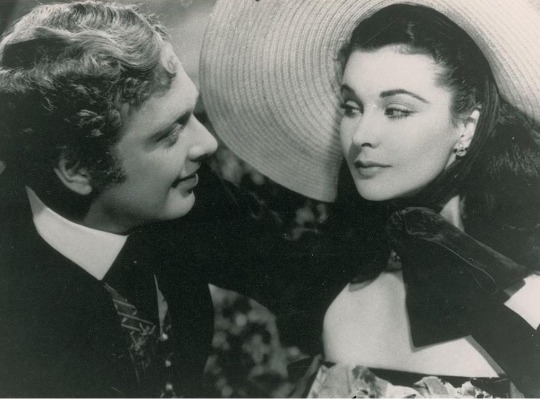


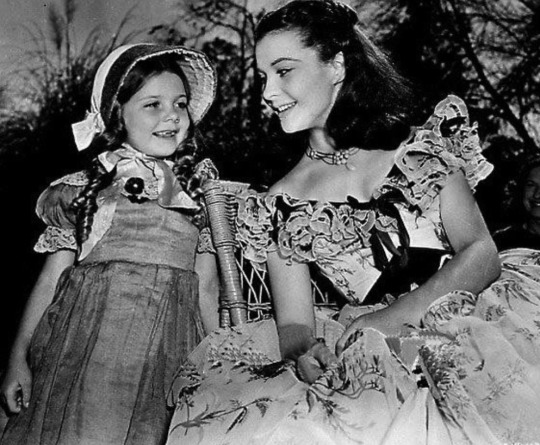
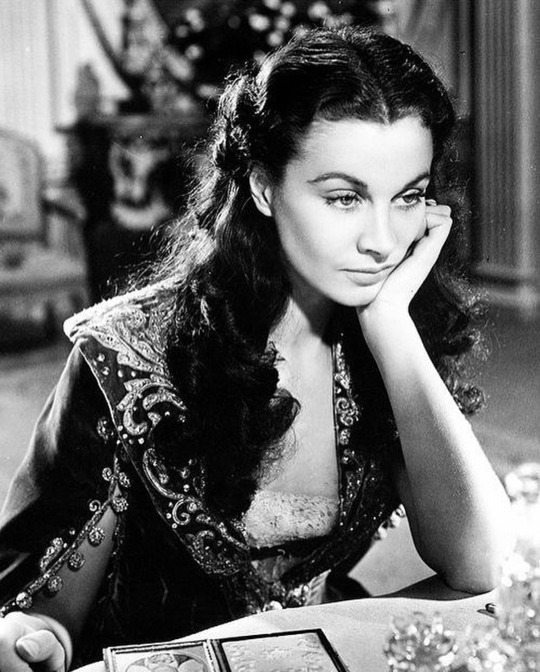

Vivien Leigh
as Katie Scarlett O'Hara in Gone with the Wind GWTW 1939. With Leslie Howard (Ashley Wilkes), Bárbara O'Neil (Mrs. Ellen O'Hara), Ann Rutherford (Carreen) Evelyn Keyes (Suellen), Rand Brooks (Charles Hamilton) Clark Gable (Rett Butler) and Olivia de Havilland (Mellanie Hamilton).
10 notes
·
View notes
Text
Chace LaChance (bgeast.com, Can-am.com, myfriendsfeet.com, wrestler4hire.com, Muscledominationwrestling.com)
While I know other blogs have explored the theme of bodies over time, Chace LaChance is an ideal case study in this theme.
The earliest erotic wrestling match with Chace I could find was his Wrestling Spotlight. The timeline get's a bit hazy as wrestling matches are not often released chronologically but below is a retrospect of this performer's work by body type from cute to beast, from jobber to heel, and everything in between.

Chace LaChance (bgeast.com) transitions from Cute to Buff to Beast
So let's begin with our updated journey through the many phases of Chace ... note that I classified them in terms of his look as well as his listed weight.
Appearances [Not all shown]
Cute Chace



Wrestler Spotlight: Chace LaChance (Jobber, 165 lbs) v Paul Hudson (bgeast.com)

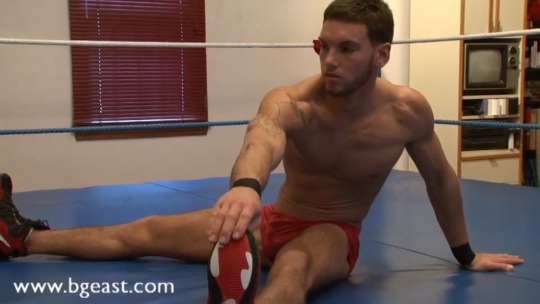

Jobberpaloozer 11: Chace LaChance (heel, 150 lbs) v Kieran Dunne (bgeast.com)

Tag Team Torture 13: Chace LaChance (Jobber, 150 lbs) & Brent Salvo v Donnie Drake (bgeast.com)

Tag Team Torture 12: Chace LaChance (Jobber, 155 lbs) & Lon Dumont v Donnie Drake & Doug Rand (bgeast.com)
Buff Stuff


Wrestler Spotlight (Morgan): Chace LaChance (mostly Jobber, 200 lbs) v Morgan Cruise (Bgeast.com)


Wrestle for me: Chace LaChance (Jobber, 170 lbs) v Brute Baynard v Damien Rush (bgeast.com)


Ringwars 34: Chace LaChance (Jobber, 175 lbs) v Zach Reno (bgeast.com)

Chace LaChance (Jobber) v Vlad (wrestler4hire.com)



Myfriendsfeet.com

Season 14 Episode 2: Daddy's Home 2 - Chace Lachance (Jobber) v Matt Thrasher (Muscledominationwrestling.com)
Beast Mode


Wrestler Spotlight: Chace LaChance (mostly heel, 200 lbs) v Jake Jenkins (bgeast.com)

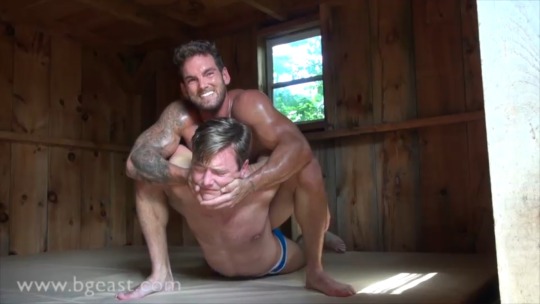
Great Outdoors 2: Chace LaChance (mixed, 180 lbs) v Mason Brooks (bgeast.com)


Gazebo Grapplers 18: Chace LaChance (heel, 180 lbs) v Kirk Donahue (bgeast.com)



Wrestleshack 20: Chace LaChance (total heel, 170 lbs) v Ben Monaco (bgeast.com)
-
For additional images, check out the original post at:
48 notes
·
View notes
Text
Ships I Write For:
- Marvel
FitzSimmons
The Scientists and the Spies (Leopold Fitz/Jemma Simmons/Clint Barton/Natasha Romanoff)
Lance Hunter/Leopold Fitz
Huntingbird
Clintasha
Hulkeye
StaticQuake
Daisy Johnson/Piper
Daisy Johnson/Piper/Lincoln Campbell
Melinda May/Phil Coulson
Mack Mackenzis/Elena "Yo-Yo" Rodriguez
Foggy Nelson/Matt Murdock
Wilson Fisk/James Wesley
Luke Cage/Danny Rand
Danny Rand/Spiderman (Ultimate Spiderman only)
IronHawk
Technobow
Stony
Cherik
Armando Muñoz/Alex Summer
Nightsilver
Scott/Jean
Danielle Moonstar/Rayne Sinclair/Illyana Rasputin/Sam Guthrie/Roberto de Costa
Raven/Hank
Wandavision
Peter/Ned/MJ
Carol Danvers/Maria
Symbrock
Bucky Barnes/Sam Wilson
Loki/Mobius
Kate Bishop/Yelena Belova
~
- DC
Birdflash
Malcolm West | Herald/Joey Wilson | Jericho (Teen Titans only)
Rachel Roth | Raven/Garfield Logan | Beast Boy
Coldflash
Superflarrow
Vibeflash
Atomwave
Coldatom
Flashatom
Coldwaveatomflash
Goldenvibe
Toliver
Hawkmates
Killerwave
Winnara
Scholsen
Atomblazer
Coldatomwave
Atomfrostwave
Bruce Wayne/Selina Kyle
Harley Quinn/Poison Ivy
~
- NCIS
Tony DiNozzo/Jimmy Palmer
Tony DiNozzo/Nick Torres/Jimmy Palmer
Nick Torres/Jimmy Palmer
Sam Hanna/G Callen
G Callen/Eric Beale
Kensi Blye/Marty Deeks
Poly!Agents (Callen/Sam/Kensi/Deeks/Eric/Nell)
Nell/Nate
Tim/Abby/Delilah
Bishop/Kasie
Gibbs/Jack Sloan
Sam/Michelle
Jessai (Jesse Boone/Kai Holman)
Pride/Chris/Sebastian
Lucy/Kate
~
- Criminal Minds
Hotch/Hailey
Tara/Emily
Jemily
MoReid
Micphet (Prophet/Mick Rawson)
Sam Cooper/Prophet/Mick Rawson
JJ/Will
Luke/Penelope
Rossi/Erin
~
- Harry Potter
Wolfstar
Jegulus
Jeguiliy
Jacob Kowalski/Newt Scamander
Fred Weasley/Harry Potter/George Weasley
Ron Weasley/Harry Potter
Hermione Granger/Harry Potter
Hermione/Ron/Harry
Harry/Luna
Luna/Ginny
Ginny/Harry
~
- Maze Runner
Newtmas
~
- Doctor Who
Rose/Nine
Martha/Ten
Clara/Eleven
Rose/Nine/Jack Harkness
~
- Supernatural
Destiel
Sabriel
Crowly/Bobby
Bobby/Balthazar
~
- Star Wars
Skysolo
Stormpilot
Jedistormpilot
Obi-Wan/Anakin
Obi-Wan/Anakin/Padme
~
- Star Trek
Chulu
McSpirk
Spirk
McKirk
~
- Merlin
Merther
Morgana/Gwen
~
- Miss Peregrine's Home for Peculiar Children
Hollowheart
Floatingfire
~
- Lord of the Rings/Hobbit
Aralas
Frodo Baggins/Samwise Gamgee
Meriadoc Brandybuck/Peregrin Took
Frodo/Samwise/Merry/Pippin
Bagginshield
~
- Dark Matter
OneThree
~
- Power Rangers (full list in the pr blog)
Jake Holling/Noah Carver
Brody Romero/Preston Tien
Hayley Foster/Calvin Maxwell
Tyler Navarro/Riley Griffen
Jayden Shiba/Antonio Garcia
Mike/Kevin
Devon Daniels/Ravi Shaw/Zoey Reeves/Nate Silva
Devon Daniels/Nate Silva
Casey Rhodes/RJ
Vida Rocca/Xander Blye/Chip Thorn
Nick Russell/Chip Thorn
Jack Landors/Syd Drew/Sky Tate/Z Delgado/Bridge Carson
Jack Landors/Bridge Carson
Will Aston/Mackenzie Hartford
Ronny Robinson/Rose Ortiz
Scott Truman/Summer Landsdown/Dillon/Fynn McAllistair/Ziggy Grover
Dillon/Ziggy Grover
Scott Truman/Flynn McAllistair
Shane Clarke/Dustin Brooks
Zayto/Ollie Akana
Zayto/Ollie Akana/Javi Garcia
~
- Hawai'i Five-0
McDanno
Max Bergman/Jerry Ortega
~
- Shadowhunters
Jimon
Alec Lightwood/Simon Lewis
Jace Herondale/Clary Fray/Simon Lewis
Magnus Bane/Alec Lightwood/Simon Lewis
Malec
Clizzy
~
- Umbrella Academy
Dave/Klaus Hargreeves
Eudora Patch/Diego Hargreeves
~
- Flashpoint
Julianna Callaghan/Sam Braddock
Lewis Young/Spike Scarlatti
Sam Braddock/Spike Scarlatti
Sam/Spike/Lew/Donna/Winnie/Jules
~
- Teen Wolf
Derek Hale/Stiles Stilinski
Allison/Scott
Erica/Boyd
Danny/Ethan
Lydia/Jackson/Aiden
Lydia/Stiles
~
- Grimm
Monroe/Rosalee Calvert/Nick Burkhardt
Nickroe
Adalind/Juliette
Roddy Geiger/Carter Brimey
Renard/Wu
Wu/Hank
~
- White Collar
Peter Burke/Neal Caffrey
Peter/Elizabeth
Peter/Elizabeth/Neal
~
- CSI
Horatio Caine/Eric Delko
Caine/Eric/Speedle
Calleigh/Ryan Wolfe/Natalia
~
- 9-1-1/Lone Star
Tarlos
Russley
Owen/Michelle
Bobby/Athena
Hen/Karen
Chimney/Maddie
Marjan/Paul
Mateo/Nancy
Nancy/Marjan
~
- One Chicago
Kelly Severide/Matthew Casey
Greg "Mouse" Gerwitz/Jay Halstead
Will Halstead/Connor Rhodes
Will Halstead/Natalie Manning/Connor Rhodes
Will Halstead/Justin Lieu/Connor Rhodes
Gabby/Shay
Darren/Blake
Mouch/Trudy
Herrmann/Cindy
Boden/Donna
Cruz/Chloe
Antonio/Peter Stone
Antonio/Voight
Sarah/Noah/Joey
Crockett/Ethan
Ethan/April
April/Maggie
~
- Mission Impossible
Ethan/Will
Jane/Bengi
~
- Sherlock
Johnlock
Greg Lestrade/Mycroft Holmes
~
- House
House/Chase
House/Wilson
Wilson/Chase
House/Wilson/Chase
Foreman/Thirteen
~
- Ghost Whisperer
Melinda/Jim
Melinda/Rick
Melinda/Rick/Eli
~
- Baby Driver
Darling/Buddy/Baby
~
- Bull
Danny/Cable
Bull/Benny
~
- Julie and the Phantoms
Luke/Julie
Luke/Reggie/Alex
Luke/Alex
Julie/Flynn
Julie/Carrie
~
-TMNT
Leo/Usagi (2003 only)
Leo/Karai (2003 only)
Raph/Traximus
Raph/Casey Jones
Don/Usagi (2003 only)
Don/Leatherhead
Mikey/Mondo Gecko
Mikey/Renet
Splinter/Tang Shen (2012 only)
~
I do not write incest of any kind, I do not write abuse unless by my own ideas, I do not write manipulation unless by my own ideas
If you have a question about a ship you don't see up here and want me to write, you're welcome to DM/IM me.
Thank you!
18 notes
·
View notes
Text
So the narrative building of Paul’s hammering begins.
It’s the evil right. All these years later they’re still running with the notion that Gabrielle Giffords was attacked because of political identity and ideology. I’ve also seen 1/6 bandied about freely by corporate punditry with no care for any legitimate purpose or association, but I’ve yet to hear mention of Rand Paul’s assault or Darrell Brooks. The baseball Bernie bro shooting was mentioned once, but it was a counterbalance to the Giffords canard. The timing couldn’t be more perfect were it all scripted.
19 notes
·
View notes
Photo
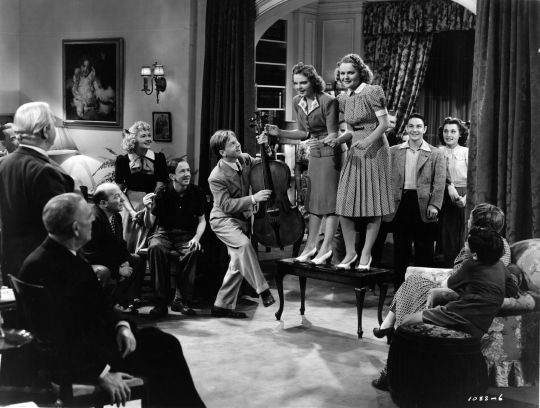
Babes in Arms (1939)
When did the “theater kid” stereotype become a term of dismissal? Through my secondary school days (and this goes for those in secondary education at the present time, too), the theater kid designation was always derisive, to denote classmates too obsessed with musical theater and often keeping to their own clique. Being an orch dork myself in those days, I found myself in an awkward middle ground: understanding fully a theater kid’s love of musical theater, yet a bit intimidated by their devotion to the medium.
The above is a circuitous way to ironically note that I have never been uncomfortable with Metro-Goldwyn-Mayer’s (MGM) hey-kids-let’s-put-on-a-show musicals of the 1930s and ‘40s. Central to that subgenre of musical at MGM were Judy Garland and Mickey Rooney – both embodying, in most of their ten joint movie appearances from 1937-1948, the traits identifiable to anyone who understands how theater kids behave. Their movie musical collaborations contain no narratives of note, just sheer musical and choreographic virtuosity that holds up more than eighty years later. Babes in Arms, directed by Busby Berkeley, is the first of Berkeley’s unofficial “Backyard Musical” series starring Garland and Rooney – later followed by Strike Up the Band (1940) and Babes on Broadway (1941). Having seen only the middle film of that trilogy before, Babes in Arms is the weaker of the two I have completed. But for a roughly ninety-minute romp with puffed-up adolescent drama and a modest budget, Babes in Arms is decent value for those interested in movie musicals and the filmographies of those involved.
It is 1921 somewhere in America. Vaudeville patriarch Joe Moran (Charles Winninger) announces the birth of his only child, a son. Fatefully, his son is literally born on stage. Fast forward to the late 1930s and we find Joe’s son, Mickey (Mickey Rooney) teaming up with girlfriend Patsy Barton (Judy Garland; whose character comes from a different vaudeville family) to sell one of his songs to a music publishing company. He’s on piano; she’s the singer as they perform “Good Morning” (yes, that same song Gene Kelly, Debbie Reynolds, and Donald O’Connor hoofed so magnificently to in 1952’s Singin’ in the Rain). The publishers unsurprisingly purchase Mickey’s song. $100 (more than $2,000 in 2022’s USD) in hand, Mickey returns home to his parents but is aghast to learn that his parents – who left the vaudeville circuit shortly after the 1927 introduction of synchronized sound in movies – are heading back on tour without him. To convince his parents to bring him along, he and Patsy piece together a plan that any spurned child might pursue: to put on a show with the other musically talented kids in the community (deeming themselves the “Babes in Arms”).
Teenage drama ensues including an unnecessary physical assault, a preventable love triangle, and an unfortunate decision to use blackface (more on this later). The cast also includes Grace Hayes as matriarch Florrie Moran, Margaret Hamilton as busybody Martha Steele, Rand Brooks as Martha’s nephew, Guy Kibbee as a judge, and June Preisser as the third side of the aforementioned love triangle with an unfortunate nickname. Betty Jaynes plays Mickey Rooney’s elder sister while Douglas McPhail plays Don Brice, one of the older kids with an underutilized baritone.
Babes in Arms is technically based on composer Richard Rodgers and lyricist Lorenz Hart’s 1937 stage musical of the same name. And though Rodgers and Hart are credited, this film adaptation resembles little of their original work, with only two songs from the stage musical retained for this movie. “The Lady Is a Tramp” appears only in the score, while the title song and “Where or When”. “Babes in Arms” appears as Mickey Rooney rounds up the neighborhood teenagers to march militarily down the roads – crates and (gulp) torches in hand. With even brief quotations of “Ride of the Valkyries” from Wagner’s Die Walküre in the song (2:53 in provided video), these kids, however well-dressed, might be taking on their newest task too exuberantly. “Where or When”, a ballad that few ever seem to mention, is sung beautifully by Douglas McPhail and Betty Jaynes; the inclusion of the little children on their one-quarter or half-sized string instruments is a charming touch. Garland briefly sings “Where or When” too, and one just wishes she could carry the song to its conclusion.
Among the MGM musical entries, most will recognize “Good Morning” (music by Nacio Herb Brown, lyrics by Arthur Freed) during Rooney and Garland’s attempt to sell the former’s song to the publishing agency. This original rendition of “Good Morning” does not have the choreographic mastery as seen in Singin’ in the Rain, but it certainly establishes that easygoing dynamic audiences would see often between Garland and Rooney.
youtube
By the time the film hits the stage show that concludes Babes in Arms, Mickey, Judy, and company will have sung quite the gamut of musical numbers. Separating themselves from most of the soundtrack are “Daddy Was a Minstrel Man” and “God’s Country”. The former (music and lyrics by Roger Edens) opens the stage show and is the first part of a sequence where both Judy Garland and Mickey Rooney don blackface. Blackface, which originated from American minstrel shows in the early nineteenth century, is a theatrical device in which a typically non-black person wears makeup to portray a happy-go-lucky caricature of a black person. This offensive practice predates cinema and serves no useful performative or cinematic purpose – a non-black performer can pay homage to black culture without perpetuating stereotypes, such as applying blackface. Unfortunately, both Garland and Rooney would be in blackface again in the last film of the Backyard Musical trilogy, Babes on Broadway. For some, “Daddy Was a Minstrel Man” and the following song, “I’m Just Wild About Harry” (a 1921 number with music by Eubie Blake and lyrics by Noble Sissle), will be distracting, to say the least. Together, they smash the picture of teenage innocence that (mostly) courses through Babes in Arms.
“God’s Country” is unabashed American flag-waving that proclaims the U.S. as a divinely dynamic nation. Briefly quoting the melody from “Yankee Doodle”, the song – considering that the United States was, at this time, a mostly insular nation that would rather not be involved with the mounting tensions in Europe and Asia – offers some curious lyrics, such as celebrating American freedom with this:
A hundred million rooters can’t be wrong,
So give a hand, give a hand,
Give a cheer for your land,
Where smiles are broader, freedom greater.
Every man is his own dictator.
Even more surprising lyrics appear shortly after that lightly rib the soon-to-be Axis nations:
We’ve got no Duce;
We’ve got no Führer.
But we’ve got Garbo and Norma Shearer.
Got no goose step;
But we’ve got a Suzie Q step
Here in God’s country!
For a movie made before and released after Nazi Germany’s invasion of Poland, this is as strong a criticism as one might expect from a major Hollywood movie at this juncture. Through most of the 1930s, every major Hollywood studio except Warner Bros. heeded the demands and threats of Los Angeles-based Nazi Germany diplomat Georg Gyssling, who suggested edits on certain screenplays to root out any critique of Germany and Nazism. This cinematic appeasement was sweeping, but it appears that Gyssling and his associates missed a small detail in Babes in Arms.
Other than the wall-to-wall soundtrack, the main attraction for Babes in Arms are its two co-stars. Still teenagers, Rooney and Garland were given an adult’s workload. Including both feature films and shorts, Babes in Arms was Mickey Rooney’s ninety-sixth of ninety-eight films of the 1930s. Somehow, Rooney, already one of MGM’s brightest lights thanks to the Andy Hardy series (1937-1958), is abundantly manic and tireless here in his first movie musical. Even in comparison to the exhaustingly hyperactive of mainstream American filmmaking, Rooney’s enthusiasm almost leaps off the screen. For her part, Judy Garland was not a household name yet when she trotted in front of the camera to film Babes in Arms. Her performance is not quite assured here, and any hint of believable romance between her and Mickey Rooney is spotty more often than not in part due to a sloppy screenplay. By the time of the film’s release, The Wizard of Oz (1939) had already been out in theaters for more than a month. History correctly regards The Wizard of Oz as an essential film, but Babes in Arms grossed more at the box office in 1939. Babes in Arms cemented a career 1939 for Judy Garland, which, just before the film’s premiere, also saw her lay her hands and feet in the cement at Grauman’s Chinese Theater.
Director Busby Berkeley (choreographer on 1933’s 42nd Street and Gold Diggers of 1933) made a name for outlandish mass choreography, but his choreographic style fell out of fashion by the end of the 1930s. Babes in Arms is pedestrian work from the master visualist, but it also marks the beginning of lyricist Arthur Freed’s (1943’s Cabin in the Sky, 1951’s An American in Paris) career as an MGM producer. Within the MGM hierarchy, the “Freed unit” was an assemblage, under Freed’s leadership, of actors (many of whom were principally stage actors before signing up with MGM), composers and lyricists, writers, and directors with the express purpose of crafting movie musicals with little executive interference. Babes in Arms does not yet quite contain that artistic freedom of an Arthur Freed musical, but many of the personnel in front of and behind the camera would become key contributors to the Freed unit.
As manufactured and predictable as much of Babes in Arms’ drama might be, I find it still quite watchable. Several statements from Mickey Rooney decades after completing this film perhaps explain why. In any case that the Backyard Musical trilogy comes up in a Mickey Rooney interview, Rooney usually noted how semiautobiographical these films were for himself and Garland. Both came from vaudevillian families; public performance as natural to them as breathing. Garland and Rooney spent much of their lives on a stage – theater kids, if you will – and derived profound happiness from performance. Even when surrounded by disagreeable, perhaps abusive, persons while making these movies (there are indications that Berkeley was difficult towards Garland, who was already enduring MGM head Louis B. Mayer’s cruel barbs regarding her physical appearance), that desire to embolden and transport others remains.
Babes in Arms might not be to the liking of those who still disdain theater kids, nor any of the Backyard Musicals. For others like yours truly, who appreciate the musicality and energy on display but never quite belonged to either extreme, Babes in Arms is lighthearted entertainment, flawed in execution, honestly acted.
My rating: 6/10
^ Based on my personal imdb rating. My interpretation of that ratings system can be found in the “Ratings system” page on my blog (as of July 1, 2020, tumblr is not permitting certain posts with links to appear on tag pages, so I cannot provide the URL).
For more of my reviews tagged “My Movie Odyssey”, check out the tag of the same name on my blog.
#Babes in Arms#Busby Berkeley#Mickey Rooney#Judy Garland#Charles Winninger#Guy Kibbee#June Preisser#Margaret Hamilton#Jack McGowan#Betty Jaynes#Douglas McPhail#Kay Van Riper#Richard Rodgers#Lorenz Hart#Arthur Freed#Nacio Herb Brown#Roger Edens#TCM#My Movie Odyssey
9 notes
·
View notes
Text
some random characters and what i think their knight radiant order would be
Luffy is definitely a Willshaper he's the warrior of liberation he frees slaves and crushes systems of oppression 100% will shaper
Zoro is either a Stoneward or an Elsecaller depending on what parts of his character you want to look at
Nami is a hard one her character is more roguish and sneaky but she is also shown as very motherly and protective, forgiveness has also been an important part of her arc post time skip I'm not sure but I'll go Willshaper for a very similar reason as Eshioni the lady dreams of drawing a map of the world for ado's sake
Ussop is a Lightweaver 100% a teller of tall tails who has to learn that he is brave he has also taken on many personas as the series has gone on
Sanji he's self-sacrificing in a very Windrunner kind of way he protects even the people he dislikes like Zoro and Dr. Kuriha but he is also endlessly kind refusing to leave anyone hungry and saving his family even though he doesn't forgive them his empathy towards some characters has let them to become allies and idk he feels very Edgedancery sometimes
Chopper is either an Edgedancer or Windrunner depending on how you see his Vow to find a cure for all illness
Robin is Truthwatcher i don't think anyone will argue about that
Franky can go either Dustbringer because of his arc being about making weapons he can be sure are only used responsibly or Stoneward as most of his fights amount to you take my hit I take your hit till one of us falls type deal
I don't have one for Brook
Jimbie in a story sense probably gets Fishertiger's spren so he would be a Willshaper if not he's a Stoneward
Rand Al'thor would be a Windrunner who bonds the stormfather later into his arc probably as Zen Rand
Perrin would be a Lightweaver who bonds a Peakspren later on into his arc
Mat would also be a Lightweaver for a very different reason than Perrin
Nynaeve would be an Edgedancer
Egwene would be an Elsecaller
Lan a Stoneward
Moiraine im not sure honestly
Harry Dresden would either be a Dustbringer due to all of the dark powers he deals with and has to hold back or a Windrunner because of how fiercely protective he is of people
Karen Murphy starts out as a great Skybreaker and can stay as one but probably becomes a Windrunner instead
Michael Carpenter is a Windrunner
Butters is an Elsecaller?
idk for Thomas
4 notes
·
View notes
Text

Doctor Strange: Damnation (Vol. 1/2018), #1.
Writers: Nick Spencer and Donny Cates: Art: Rod Reis; Letterer: Travis Lanham
#Marvel#Marvel comics#Marvel 616#Doctor Strange: Damnation#Moon Knight comics#Moon Knight#Marc Spector#Mr. Knight#Blade#Eric Brooks#Elsa Bloodstone#Doctor Voodoo#Jericho Drumm#Man-Thing#Ted Sallis#Iron Fist#Danny Rand#Ghost Rider#Johhny Blaze#WHAT a line-up!!!#Man-Thing !!! Light of my life!#And I find it additionally hilarious that Ben Reilly isn’t a part of this initial line-up but he inserts himself anyway by virtue of???#Actually being a Las Vegas-based hero at the time??? the heck guys he actually lives there#(even if he is in a full-blown morally-questionable Going Through It phase during that run)
13 notes
·
View notes
Text
Why I don’t like SubscribeStar
If a platform promoted itself as supporting “free and intelligent conversation without fear of being bullied, de-platformed or prosecuted” and “free of political biases,” would you think, oh, that sounds like it’s for me? Or would you worry that sounds like a dog whistle, how free speech alternative sometimes means, you know, free speech, but in our current political moment too often means neo-Nazis welcome?
Well, those quotes are from SubscribeStar. Specifically, they’re from a late 2018 Financial Times article about PayPal cutting them off after it was “flooded with alt-right activists,” most notoriously Sargon of Akkad. While using PayPal as a moral arbiter is hardly without flaws, it is the sort of thing that makes one wonder.
Okay, you might say, SubscribeStar has a bit of “alt tech” vibe, but they’re more ultra-libertarian, right? Maybe. But let’s dig in a little. On June 2, 2022, these were the first few “Stars” on SubscribeStar’s “Explore Stars” page.
Naomi Wu, a/k/a “Sexy Cyborg,” a Chinese “internet personality” (in Wikipedia’s words). She’s here because she was kicked off Patreon after doxxing a reporter at Vice, after arguing that the profile of her the reporter wrote included details that put her at risk.
Dave Cullen, a “tech journalist.” Not the journalist who’s written about gun control activism and school shootings in Parkland: Birth of a Movement; this Dave Cullen is a pro-Brexit Irish ultra-nationalist who is against feminism, abortion, and gay marriage. He has a Gab account.
FreedomToons. A right-winger “creating educational and satirical cartoons about freedom and liberty.” Cool.
Daisy Cousens. “Together we can fight the culture wars, and with your support, I may come out unscathed. I also write for The Spectator…” Cool.
Military History Visualized. Seems to be what it says on the tin. While this stuff tends to be popular with the right wing, I can’t find anything that suggests the creator takes any political stances.
Dreamkeepers. Yes, this is the popular furry comic. The popular furry comic which (checks notes) bought ads on alt-right troll Milo Yiannopoulos’s show and created a fan art fursona for him. While they tried to distance themselves from that later, they were still, as a possibly too-kind former associate put it, “wrapped up in an ideological echo chamber” in 2021. The creator has a Gab account.
Tracy Beanz. “Independent journalist,” by which she means early QAnon proponent. She has a Gab account.
Mind and Magick. Digging deep into esoteric occult stuff, but probably not political.
Yaron Brook. “Brook travels extensively promoting Ayn Rand and her philosophy—Objectivism, Capitalism, Political & Economic Freedom.” Cool.
Should I Smoke This. A cigar review show.
So, numbers 2, 3, 4, and 7 are far-right activists, number 9 is a hardcore objectivist, number 6 is an alt-fur, and only numbers 5 and 10 are apolitical. Number 1, Ms. Wu, isn’t apolitical, but she’s hard to pin down. She has left-leaning techno-libertarian fans, to be sure, but also conservative fans drawn to her fights with ostensibly left-leaning organizations like Vice.
Is this ratio an outlier? Am I just cherry-picking by using the first ten? I don’t think so. A significant portion of their successful stars are far-right activists, conspiracy theorists, or full-bore white supremacists. So far, every single time I’ve found a reference to the politics of an ostensibly non-political creator, it’s conservative, from British historian David Starkey to science YouTuber Isaac Arthur. (Technically, I found Arthur’s wife’s politics—she’s an Ohio state representative who, in March of this year, argued that the history of the Holocaust should be taught from the perspective of the Nazis. Good times.) Even when I can’t find someone openly declaring their politics, there’s often a conservative vibe in the very concept, like “Family Friendly Gaming” and “The Urban Prepper.” I’m not saying “conservative vibe” is automatically bad—it’s just, again, a thing that makes you go hmmm when taken in context.
What I didn’t find is anyone who’s overtly leftist. I’m not saying there aren’t any, but I’m saying that not finding a single one in the first ten “explore” pages—200 creators—while finding dozens of overtly conservative, libertarian, or far-right creators probably means something.
I understand that there are people who were kicked off Patreon due to content violations, or people who are worried they would be and went to SubscribeStar preemptively. But, many—I suspect most—people kicked off Patreon get booted not because their drawings are just too darn fetishy, but because they’re engaging in hate speech or making threats. And a lot of those people are not only on SubscribeStar, they’re actively promoted by the platform, and in some cases, were actively recruited to it (per the Financial Times reporting mentioned above).
So, do I really recommend Patreon over SubscribeStar? Bluntly, unless you really know that what you do can’t be done on Patreon, yes. They’re supportive of adult content—and furry content. It is true that Patreon is more restrictive than SubscribeStar is, including over what they call “some fringe areas of adult content”. And, sure, Patreon is a for-profit site subject to the pressures of venture capital. Eventually, they’ll have to do ever more to court creators bringing in millions a year—a real risk for creators bringing in mere thousands. Maybe that’s enough to make some left-leaning creators, let alone ones creating largely apolitical work, turn a blind eye to the company they’re keeping on SubscribeStar. But I don’t think it would be for me.
I can’t help but think of the story that went around on Twitter about the punk bartender throwing out a polite Nazi dude because if you let them hang around, before you know it you’re running a Nazi bar. I’m not saying SubscribeStar is a Nazi bar. But I am saying it’s a bar that has a measurable number of Nazis in it. And the bartenders have put out the word that if you get kicked out of other bars for, you know, reasons, you’re always welcome at the good ol’ “SS.”
4 notes
·
View notes
Text
Parental involvement has become a flashpoint in the public debate over what instructional content is appropriate for school settings. These heated discussions have manifested in numerous forms, including a Parents Bill of Rights Act passed by House Republicans, lawsuits initiated by parents against school districts, and even violent conflicts at school events. The media narrative has largely pitted parents against schools (even though these incidents may be the work of a small but vocal minority of parents).
Over the last two years, we’ve repeatedly used the RAND Corporation’s American Educator Panels (AEP) to survey educators about how they are navigating politically charged issues. These national surveys of K–12 educators—including district leaders, principals, and teachers—consistently show that parents have become a key source of tension in schools.
In this post, we use AEP survey findings to discuss what role educators see parents playing in these debates over politicized issues. We also discuss what schools can do to better engage parents as a way of alleviating political tensions.
Educators at all levels have experienced pressure from parents about politicized topics
In fall 2022, about half of a nationally representative sample of 300 district leaders agreed that political polarization over hot-button topics like critical race theory, LGBTQ+ issues, and COVID-19 safety practices was interfering with their ability to educate students. When we asked what specific challenges districts had experienced, leaders often identified issues involving parents or local community members (see Figure 1). For example, roughly three in ten said they were dealing with threats from the public against educators or school board members. Another three in ten reported increased requests from parents to opt their children out of instruction about controversial topics.
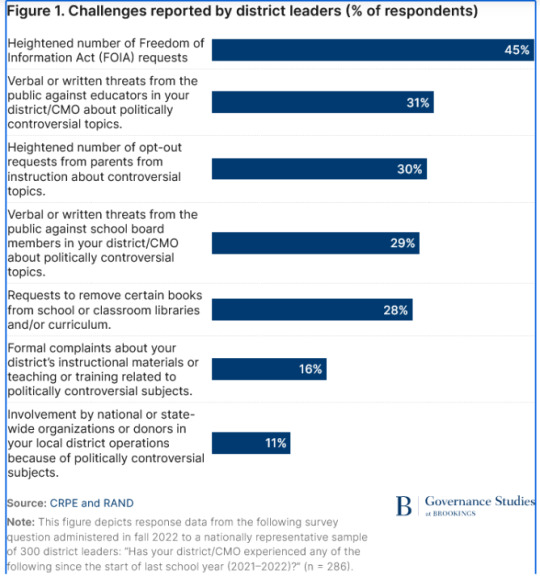
In addition to surveying district leaders, we surveyed principals. They, too, identified parents as a key source of pressure.
We asked a national sample of 1,540 principals in January 2022 whether they had experienced harassment about politicized issues such as COVID-19 mitigation measures or classroom conversations about race or bias. Overall, 61% of principals said they had experienced harassment over one of these topics, and 27% of principals said they experienced harassment specifically for their schools’ policies related to teaching about race, racism, or bias. Most of these principals were harassed over school policies that were supportive of teaching about race, racism, or bias, though some were harassed over school policies that opposed this practice. Regardless of whether the school policy fell more in line with progressive or conservative values, however, these principals overwhelmingly identified parents and family members as the source of the harassment. For example, 86% of the principals who reported harassment over a school policy supportive of teaching about racism or bias said this harassment came from parents. And 82% of the principals who reported harassment over a school policy against teaching about racism or bias said this harassment came from parents.
Our surveys also point to challenges that teachers are experiencing with parents and contentious political issues.
In spring 2022, we used an open-ended survey item to ask 1,452 teachers whether and how restrictions on discussions of race- or gender-related topics were impacting their instruction. In their responses, teachers named a variety of actors, including state leaders and school system administrators, as the source of the challenges they experienced. However, teachers most commonly pointed to parents and families. They described feeling increased scrutiny from parents about their lessons and instructional materials. They also expressed reluctance to address certain topics for fear of parental backlash.
More recent data further confirm teachers are modifying their instruction to avoid controversial topics, in large part because of real or perceived pressure from parents. In January 2023, we asked 1,439 teachers if their school system leaders had directed them to limit discussions about political or social issues in class. One-quarter of teachers said their school system leaders had done so—the same percentage as the school year before. However, a striking 65% of teachers said that they decided on their own to limit discussions about political or social issues. When we asked why, the top reason—picked by about half of teachers—was that they weren’t sure whether their school or district leaders would support them if parents expressed concerns (see Figure 2). And the second most-common reason was fear of verbal or physical altercations with upset parents.
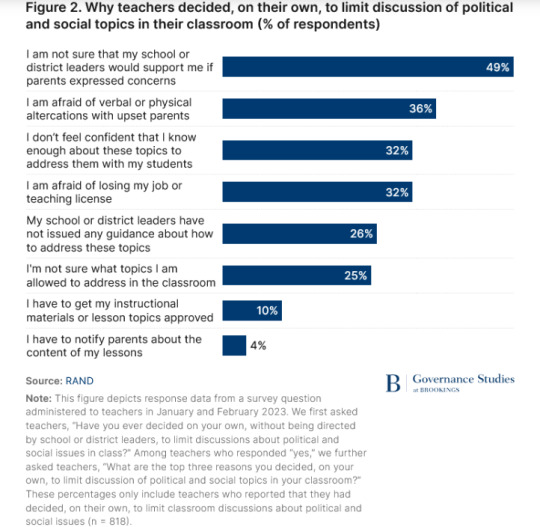
Taken together, these survey results give the impression that conflicts between parents and educators—or educators’ hopes of avoiding these types of conflicts—are having tangible impacts on how schools are approaching instruction.
Because educators at all levels have experienced pressure from parents, educators’ solution to the problem of heightened political polarization in schools must involve parents
Our national surveys of educators reveal points of tension between families and schools. However, these same surveys underscore the influence of parents and the importance of building trusting relationships with families to head off potential conflict early. Educators don’t need to hide from controversial topics. They can (and should) bring families into respectful, productive conversations to build a foundation of trust and shared goals with families before conflict arises. But educators also need clarity on how to respond when they encounter conflicts with parents and families.
We suggest school system leaders, including district leaders and principals, develop a two-pronged approach: a proactive strategy to build trust and engage parents in conversations about their children’s learning and a reactive strategy to manage conflict when it does occur to reduce the burden on educators. Here are some ideas of what school system leaders might do:
Create clear protocols for how teachers and principals should respond to families. It is inevitable that educators will encounter disagreements with families about instructional content. Teachers have told us that navigating these disagreements creates additional work. For example, they must spend time looking for different instructional materials or creating alternative assignments for students whose parents have opted them out. To avoid placing increased burdens on an already beleaguered workforce, school system leaders should streamline processes and develop protocols to respond to families’ concerns. This might include guidance on moving concerns to higher levels of authority within a school system, submitting instructional materials for approval, and responding to opt-out requests from parents. A list of approved instructional materials that teachers can draw on when they do want to address race or gender in the classroom could also help.
Collect data on what families in their school communities think about politicized issues. Anywhere from about a quarter to almost half of principals don’t know what the parents in their schools think about various politicized issues. To collect this information, school systems might administer brief, factual, and objective surveys to families in their school communities. Such data might help leaders identify potential points of contention—or even misconceptions—held by parents. These data might also help leaders avoid making decisions that address the preferences of only a vocal minority of parents and identify opportunities for school and district leaders to emphasize common ground. For instance, a recent parent survey showed that two-thirds of parents, including a majority of both Republican and Democratic parents, believe it is important that schools teach their children social and emotional skills. Leaders could emphasize these shared values when communicating about school activities or books that students are reading.
Foster greater transparency around instructional policies and practices and work to establish more alignment between parental beliefs and best practices. We know from decades of research that parental involvement in children’s schooling is critical for helping students succeed. But students are also best served when schools’ instructional practices and curriculum choices are informed by professional expertise and research evidence. School system leaders should be prepared to articulate the reasoning and evidence behind their policies and instructional practices as well as the value—whether academic, social, or otherwise—of instructional content or policies that parents might consider controversial. School system leaders should work to educate families on their instructional choices so that families can develop an understanding of the evidence and knowledge base undergirding schools’ policies.
9 notes
·
View notes
Text
A Review of The Brooks-Ammous Debate on Israel-Palestine
THE author, Austrian economist, and libertarian philosopher Saifedean Ammous recently debated the Objectivist philosopher Yaron Brooks of the Ayn Rand Institute. Ammous, being an anarcho-capitalist and Palestinian, is naturally inclined to view the conflict as being a series of totalitarian imperial state interventions under the ideological motivations of Zionism that was (and continues to be)…
View On WordPress
0 notes
Text
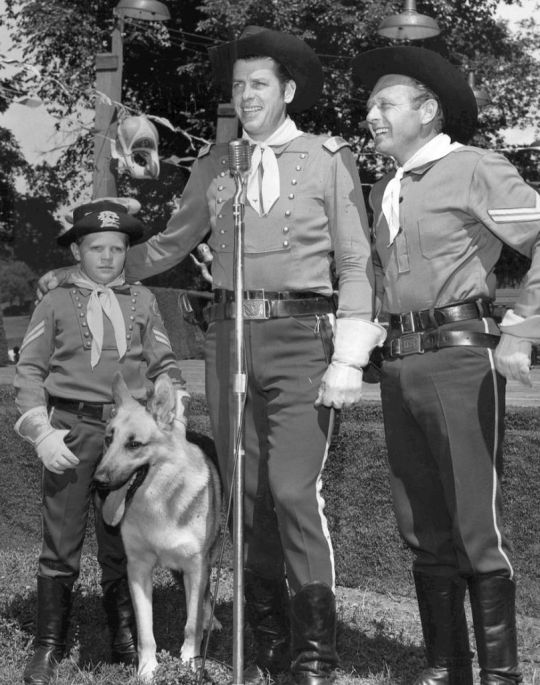
"The Adventures of Rin Tin Tin" with Lee Aaker, Rin Tin Tin, James Brown and Rand Brooks
1 note
·
View note
Text
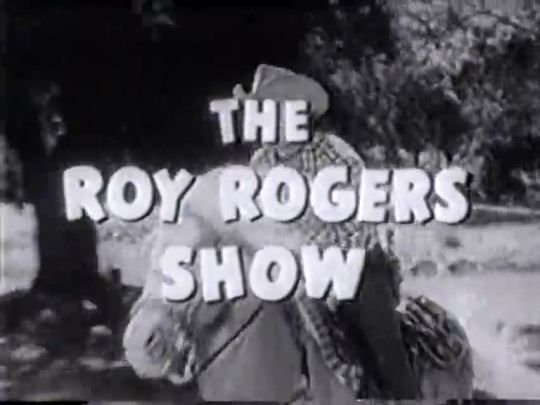





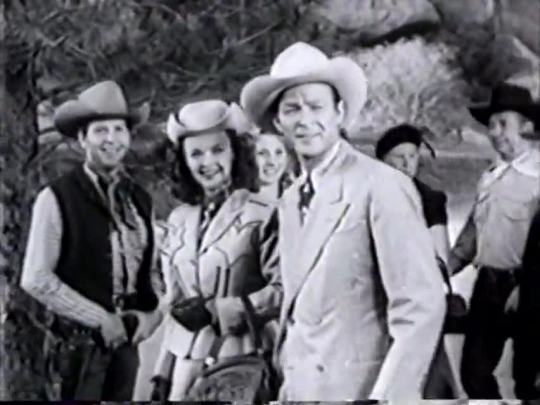



From the Golden Age of Television
Series Premiere
The Roy Rogers Show - Jailbreak - NBC - December 30, 1951
Western
Running Time: 30 minutes
Produced by Jack C. Lacey
Directed by John English
Stars:
Roy Rogers
Dale Evans
Pat Brady
Trigger, the Golden Palomino
Bullet, the Wonder Dog
Harry Harvey Sr. as Sheriff Tom Blodgett
Rand Brooks as Tom Lee
Nan Leslie as Bess Walton
Douglas Evans as Sal Parker
Gregg Barton as Henchman Waco
Terry Frost as Henchman Al
Riley Hill as Hencman Barney
#Jailbreak#The Roy Rogers Show#TV#1950's#1951#Western#NBC#Roy Rogers#Dale Evans#Pat Brady#Harry Harvey Sr.
1 note
·
View note